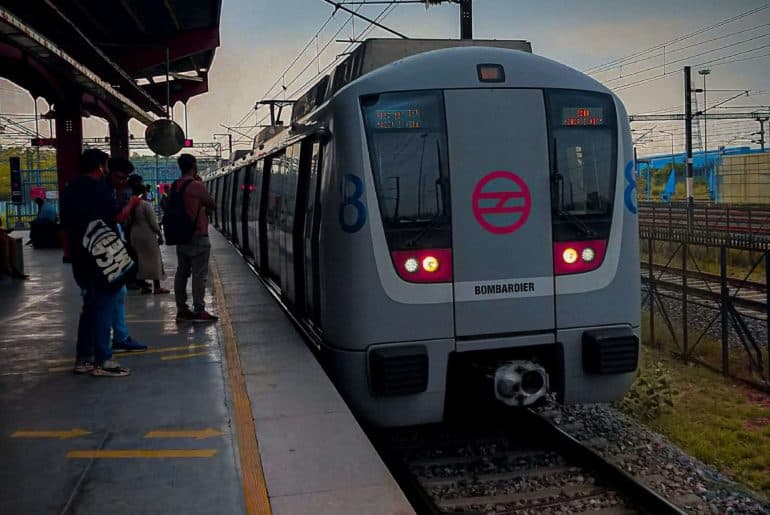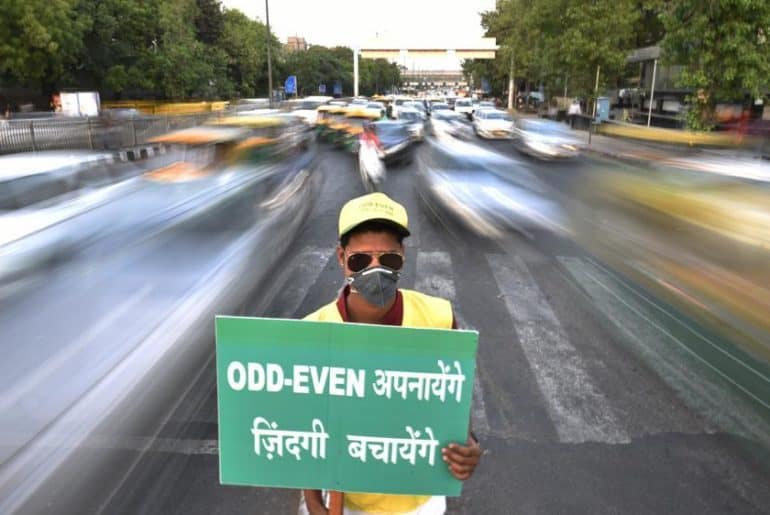This piece aims at comparing and contrasting between two of the most popular transportation mediums amongst the students of the University of Delhi (DU) in light of the National Transportation Day.
The daily pilgrimage to college is clearly left incomplete if one does not mention about transportation, be it the long metro rides or the jam packed buses! Here is a comparison and evaluation of Delhi Metro and Delhi Buses on various factors ranging right from comfort to money.
1. Comfort:
The metro offers a comfortable journey as one is away from the sudden breaks and jerks. But the seats are something which everyone has a mutual hatred for! Hard and uncomfortable, with people trying to squeeze into the tiniest of cracks and effectively invading your privacy is something everyone is troubled during the metro rides.
The buses on the other hand have a much more deadlier relationship when it comes to seats and people. The local buses which you board on places near the campus are surely very crowded. But the ones that connect bigger areas offer respite with only one person per seat.
2. Time efficiency:
The metro is steady, stable and unvarying in this attribute. It takes the same amount of time, every time, more or less. Constancy is a much desired trait, no doubt, in humans as well as in one’s means of transport. The bus on the other hand is at the mercy of the city’s infamous traffic jams. Bus travel can stretch excruciatingly long at times but that is if you are truly unfortunate. For reliability, metro is always the wisest option.
3. Expenditure:
The bus wins this one hands down! Personal observation! Where it costs me about 200 rupees for 5 days of travel in the metro, and that too if I stick strictly to my route from home to college and college to home, the bus offers unlimited travel for Rs. 165 a month to wherever I may want to venture (student perks, y’all! ). So much more money for food
4. People:
Travelling alone in the metro can be quite tiresome when you are forced to eavesdrop on conversations you otherwise will have no interest in. Although for some it’s the opposite, some who find spicy snippets of gossip amusing.
The bus on the other hand has not yet put me through such an ordeal. Till now I have found the people in the bus to keep their love affairs to themselves. Although there is no guarantee of this remaining unvaried in the future since the people everywhere are still the same puerile Delhiites. (Of which I’m one and proud to be so!)
5. Congestion:
This is completely susceptible to the time of your travel. Both the metro and the bus fare more or less the same in this category. Both are filled to the brim in office hours with no breathing space. People are known to die (almost) in both. Both subject people to the same kind of harrowing treatment on trying to board or de-board the metro/bus. People are inconsiderate of others in both and no matter how crowded, they often tend to let other people have a whiff of the gases brewing inside them
6. Accessibility:
Bus stops are everywhere. Metro stations are on their way but even then, in a city like Delhi, they cannot achieve the ubiquity of the bus stops. Constructing metro stations is a lot more work and requires a lot more space. Buses are far more convenient on this front.
7. View:
Metro gives an aerial view and can be quite awe-inspiring the first few times. One is left gaping at the neat roads and tiny cars crawling along, their rash movements imperceptible at the height I was at. But one gets used to all things in life, especially the good ones. No one stares out the window in the metro any longer, they are all busy staring at their phone screens, texting, playing games or have earphones plugged on. Soon I started feeling nostalgic for the road. The metro gives an isolated feeling at times, as if you are disconnected from the outside world. On the road you get a closer view of the workings of the city, you feel closer to its heart brimming with blood and activity!
Feature Image Credits: Hitesh Kalra for DU Beat
Chhavi Bahmba


